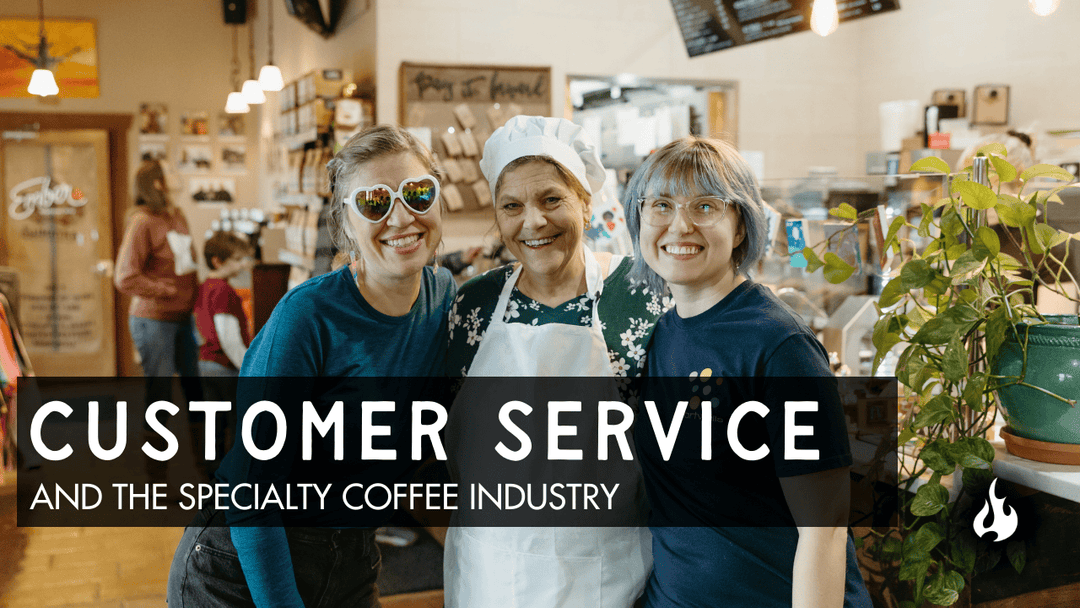Mycotoxins in Coffee
What Are Mycotoxins?
Mycotoxins are toxic substances produced by certain types of mold and fungi. These molds can grow in warm and humid conditions, meaning they can potentially contaminate various foods, including coffee beans, as they journey from production to consumption. The World Health Organization (WHO) identifies cereals, nuts, spices, dried fruits, apples, dried chiles, and coffee beans as foods that might host these molds.
Mycotoxins in Coffee
What Are Mycotoxins?
Mycotoxins are toxic substances produced by certain types of mold and fungi. These molds can grow in warm and humid conditions, meaning they can potentially contaminate various foods, including coffee beans, as they journey from production to consumption. The World Health Organization (WHO) identifies cereals, nuts, spices, dried fruits, apples, dried chiles, and coffee beans as foods that might host these molds.

What Are Mycotoxins?
Mycotoxins are toxic substances produced by certain types of mold and fungi. These molds can grow in warm and humid conditions, meaning they can potentially contaminate various foods, including coffee beans, as they journey from production to consumption. The World Health Organization (WHO) identifies cereals, nuts, spices, dried fruits, apples, dried chiles, and coffee beans as foods that might host these molds.
It's important to note that the presence of mold does not automatically mean mycotoxins are present. Mycotoxins need specific conditions to grow, and there are many different types of mycotoxins, not all of which affect all food products.
Common Mycotoxins in Coffee
Among the various mycotoxins, Aflatoxins and Ochratoxin A (OTA) are the ones most commonly associated with coffee.
Aflatoxins
Aflatoxins tend to grow on grains, nuts, and spices. They are regulated in several parts of the world, and the US limits their presence in foodstuffs to 20 parts per billion (ppb). Interestingly, research has shown that coffee contains properties, like caffeine, which may help inhibit the damage caused by Aflatoxins, especially to the liver. This means that decaffeinated coffee might actually have a higher likelihood of containing Aflatoxins, but this is carefully monitored during the decaffeination process.
Ochratoxin A (OTA)
OTA is considered potentially harmful to kidneys and the immune system, and has been shown to be carcinogenic in rats and mice. In the European Union, regulations prohibit more than 3.0 micrograms per kilogram (µg/kg) of OTA in roasted coffee. While the US does not have federally regulated limits for OTA, the coffee industry maintains strict standards to ensure safety.
Mycotoxins in Coffee: The Facts
Emma Sage, Director of Education Resources at the Coffee Quality Institute, explains that "there is no way to tell if a coffee has been contaminated by OTA unless it is tested by a lab." Mycotoxins can form during coffee processing or storage if conditions are not ideal. However, extensive testing and quality controls in the coffee industry help mitigate these risks.
Some brands market their coffee as "mold-free" or "mycotoxin-free" and may even conduct tests to back these claims. Without knowing a company's specific standards, it's challenging to assess the validity of these claims. In fact, such claims can sometimes be more about marketing than science. It's essential to be cautious about brands making bold claims without transparent testing results. Remember, if you consume grains, dried chiles, or dried fruits, you're already exposed to low levels of mycotoxins.
How Much Is In My Coffee?
The potential effects and amounts are, of course, related. Studies demonstrate that:
- Four cups of coffee per day contain only 2% of the ochratoxin. The Food and Agriculture Organization and the World Health Organization have deemed this exposure safe, but it is too low to be of practical significance.
- Modern processing methods used by specialty coffee growers effectively eliminate most molds and mycotoxins.
- Roasting kills molds that produce mycotoxins, reducing them by up to 96%.
- Decaffeinated coffee may contain a higher concentration of mycotoxins due to the absence of caffeine, a natural agent that inhibits mold growth. However, the measured levels remain too low to be of concern.
- In effect, 99% of specialty grade coffee is mold and mycotoxin free.
- The liver neutralizes mycotoxins, so they do not accumulate over time.
- Coffee contains compounds that may reduce the effect of aflatoxins.
Our Rigorous Quality Process
At Ember Coffee, we prioritize quality and safety above all else. Our rigorous process ensures that our green coffee beans are thoroughly vetted before they even reach our roastery. We work with trusted importers who maintain strict standards to ensure the beans are mold-free while in their warehouses. Additionally, we don't keep coffee on hand for long periods, ensuring it's always fresh and continually moving through our supply chain.
Due to the lack of an industry standard, we've established our own rigorous set of standards to provide you with the best coffee possible. This includes:
- verifying regular testing with our importers
- sourcing only SCA-scored 82+ specialty beans
- closely monitoring our warehouse conditions
- inspecting every shipment for the presence of mold
- collaborating with other like-minded roasters across the globe
- constantly re-evaluating this process based on the latest research
Strict adherence to our internal safety protocols ensure our coffee is not only delicious but also safe.
Should You Be Worried?
Worrying about mycotoxins in coffee is a personal choice. Different sources provide varying perspectives on their safety. Organizations representing the consumer coffee industry, such as the National Coffee Association, assure that mycotoxins in coffee are not a significant concern.
We believe that paying an extra premium for coffee advertised as free of mold is a waste of money. According to Dr. Mark Corey, head of science and regulatory affairs for the National Coffee Association, “an average adult would need to consume up to 410,000 8 oz servings of brewed coffee per day to exceed safety levels established by scientific studies.”
Conversely, some wellness-focused companies promote "mold-free" coffees, claiming higher safety standards. If this appeals to you, ensure the brand is transparent about its testing processes and results. Be wary of brands making broad claims without the data to back them up.
The Bottom Line
Mycotoxins can, in theory, be present in coffee. However, coffee sold in the United States rarely contains harmful levels of these toxins. A study conducted by researchers in Spain and published by the National Institute of Health (NIH) found that in people who drank four cups of coffee a day, mycotoxin levels were only at 2% of the maximum safe level. Even studies cited by those concerned with mycotoxins, such as Bulletproof's Dave Asprey, acknowledge that levels found in coffee are typically very low.
Moreover, the coffee industry has been proactive in addressing mycotoxins since at least the 1990s, often opting for wet processing methods which remove most mold spores if they are present.
As a consumer, there's little reason to worry about mycotoxins in your coffee. Enjoying a cup of high-quality, specialty grade coffee from a reputable source like Ember Coffee can put your mind at ease.
Try Our Specialty Grade Coffee
At Ember Coffee, we are committed to providing the highest quality coffee, roasted to perfection. Our specialty grade beans are carefully selected and processed to ensure you get a delicious and safe cup of coffee every time.
In the end, it is a personal decision for every health-conscious coffee lover to pick beans, dose, and time coffee intake for maximum benefit. If you have questions, we are here to help!







